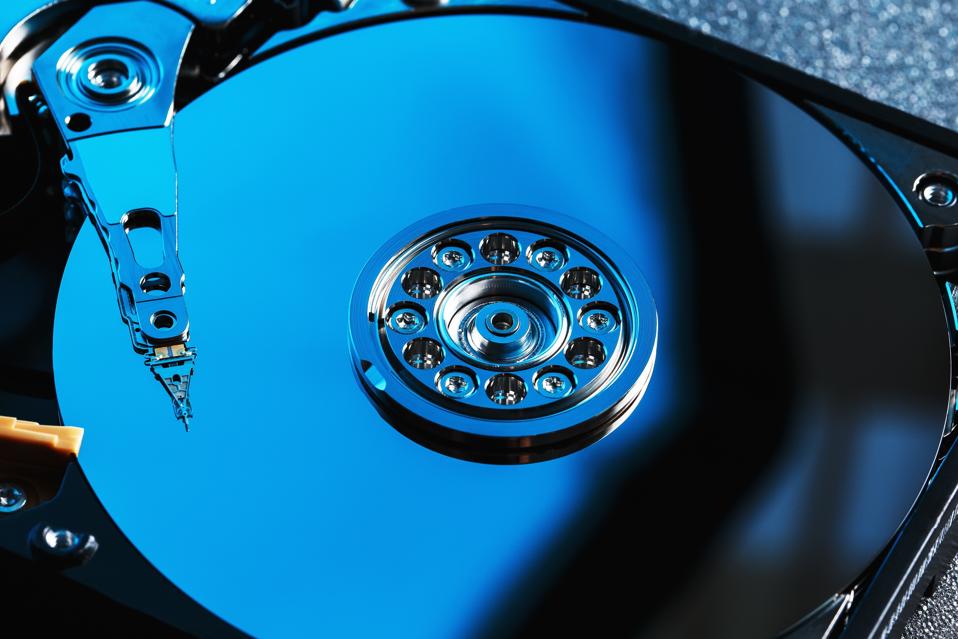At its Analyst Day event on May 23 Seagate CEO David Mosley reported that in the 12-month period ending March 28, 2025 that it had shipped 550EB of HDD storage. He also reported that 4TB Mozaic HDDs using HAMR technology had been sampled to data center customers and that qualification of these HDDs would start by next quarter with production starting by the first half of 2026.
Over 50% of Seagate Exabyte shipments are expected to be on Mozaic HDDs by the second half of 2026. He also said that the company projected revenue growth into the mid-teens for the future with about a 10% expansion in gross margin and more than $4B generated free cash flow.
Total data generation estimates for 2028 are 394ZB with estimates for data center storage demand at 2.4ZB by that year. As the chart below shows, Seagate expects that there will be a continued 20% cumulative annual growth rate exabyte storage growth but with revenue CAGR increasing from low double digits to the mid-teens out to 2028. Total data center storage revenue is estimated to grow from $13B in 2024 to $23B in 2028.
He talked about the value of the transition from PMR conventional HDDs to HAMR HDDs. By increasing the storage capacity per disk from 2.4TB with PMR to 4.0TB using HAMR the company can reduce HDD unit cost for a given storage capacity by 10-15% and that they would use this to reduce the number of HDD platforms the company offers its customers. There are additional disk, drive and data center advantages of the move to HAMR HDDs as indicated in the figure below.
Over 1M Mozaic HDDs have been shipped with these products qualified at three major cloud service providers. The company believes that all CSPs will have qualified HAMR HDDs within the next 12 months.
After the major recession in HDD and other storage and memory products in 2022 and 2023 Seagate and the other HDD companies have focused on long term contracts with major customers to avoid over production. Mosley said that 70% of the company’s HDD production was built to order today. The remaining production allows the company flexibility to meet unanticipated market demand.
John Morris, Seagate CTO, spoke about recent technical developments and technical advances that will lead to 100+TB HDDs in the near future. Seagate’s first generation HAMR drives used third party lasers to heat the disks. The company has developed its own vertical laser integration technology, see slide image below, that bonds lasers created on one wafer to the heads created on another wafer, which should decrease costs, improve overall performance and improve production.
Morris said that customer qualifications of 4TB Mozaic HDDs with storage capacities from 12-44TB will start in Q3 CY2025 with common head and media technologies and with up to 10-disk products. That implies 4.4TB capacity per disk.
He presented a few slides providing a view of the Seagate technology roadmap. The slide below shows calendar year laboratory demonstrations and products and he indicated that products should follow the lab demonstrations by about 5 years.
In 2024 Seagate made a laboratory demonstration of 6.5TB/disk with a demonstration of 10TB/disk expected in 2028. He also showed very preliminary data indicating the feasibility of 10TB per disk magnetic recording. The chart also indicates that 50TB+ HDDs should also be in production by 2028.
He also provided a more detailed roadmap of product introductions, indicating that for a given Mozaic capacity family there will be an increasing maximum storage capacity during its production, e.g. with Mozaic 4 from 40-44TB. 80+TB HDDs are projected by 2031.
Going beyond 10TB/disk will require additional technology development into the next decade. The suggested developments to achieve more than 15TB/disk are shown in the figure below. These developments could include multilayer recording and media patterning, combined with HAMR.
B. S. The, Chief Commercial Officer for Seagate said that 87% of all the data in data centers is on HDDs according to IDC. He also indicated that HDDs will remain the preferred solution for mass storage by maintaining the 6X capacity cost advantage versus SSDs as shown below and providing space, energy and cost-efficient storage for data centers.
He also provided an interesting comparison of DRAM, SSD and HDD costs, production, capex efficiency and embodied carbon, shown below.
At its Analyst Day event Seagate showed how it will continue to provide the majority of digital storage in data centers with HAMR HDDs with over 100TB capacity in the next decade.

